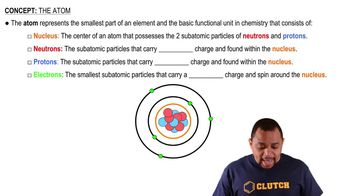Textbook Question
Determine the number of protons and the number of electrons in each ion. a. Ni2+ b. S2– c. Br– d. Cr3+
 Verified step by step guidance
Verified step by step guidance



Determine the number of protons and the number of electrons in each ion. a. Ni2+ b. S2– c. Br– d. Cr3+
Determine the number of protons and the number of electrons in each ion. b. Se2-
Determine the number of protons and the number of electrons in each ion. d. Sr2+
Predict the charge of the ion formed by each element. a. O b. K c. Al d. Rb
Predict the charge of the ion formed by each element. a. Mg b. N d. Na